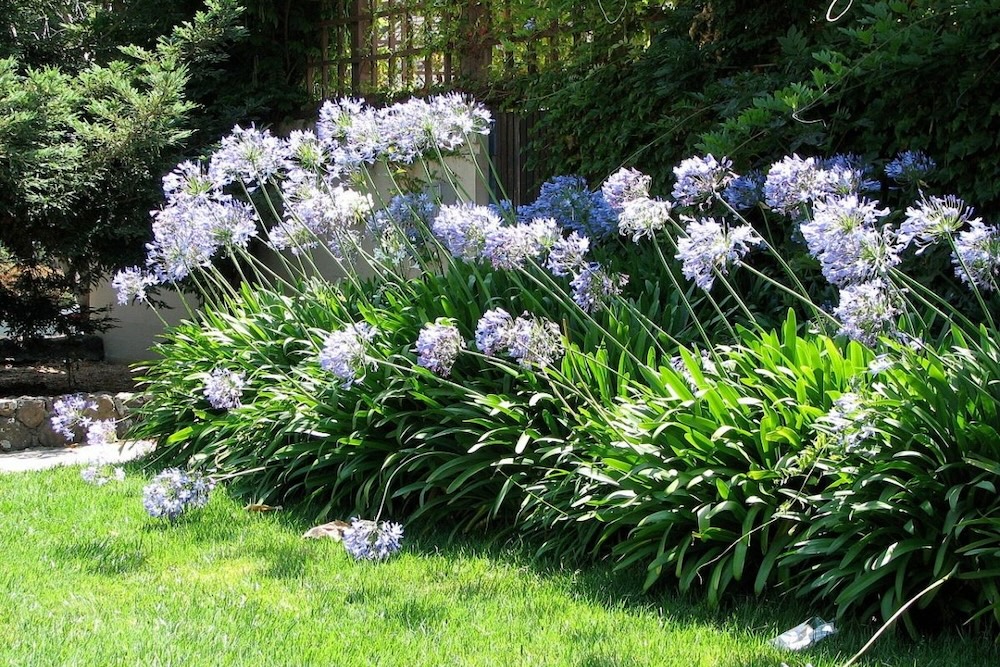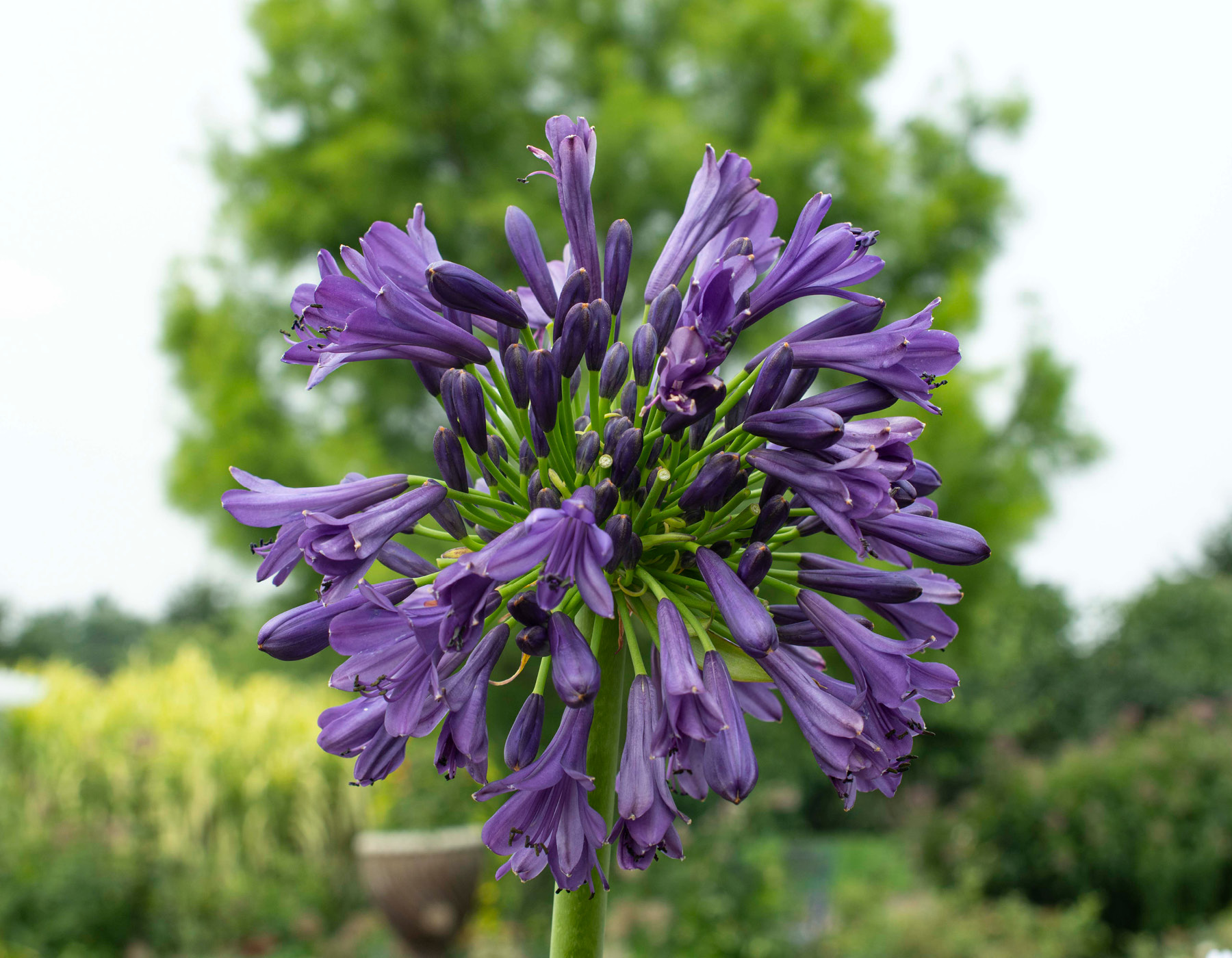Agapanthus Treatment Tips for Lush and Vibrant Flowers
Agapanthus Treatment Tips for Lush and Vibrant Flowers
Blog Article
Letting Loose the Secret to Successful Agapanthus Growing: Advice for a Flourishing Garden
In the realm of horticulture, cultivating agapanthus efficiently requires a tactical approach that encompasses different elements of plant care. By recognizing the nuances of agapanthus growing, one can create an atmosphere where these plants grow and bloom abundantly.
Planting Agapanthus: Finest Practices
When growing Agapanthus, correct dirt prep work is essential for guaranteeing successful development and development of these attractive flowers. Agapanthus, generally called Lily of the Nile or African lily, grows in well-draining dirt with a slightly acidic to neutral pH level - Agapanthus. Before planting, it is important to amend heavy clay soils with organic matter such as garden compost or peat moss to boost water drainage and give vital nutrients for the plants
To grow Agapanthus, pick an area that obtains complete sunshine to partial color, as this will certainly promote healthy growth and bountiful flowering. Dig a hole twice the diameter of the plant's origin sphere and put the Agapanthus at the exact same deepness it was formerly expanding. Carefully backfill the opening with soil, pushing down strongly to remove any kind of air pockets around the origins.
Water the recently planted Agapanthus thoroughly and remain to maintain the dirt uniformly damp, particularly throughout the plant's active expanding season. Agapanthus. Applying a well balanced plant food once a month can even more support the plant's growth and blooming. By adhering to these finest methods for planting Agapanthus, you can develop a stunning display screen of these exciting blossoms in your garden
Ideal Soil Conditions for Agapanthus
For optimal development and growing success of Agapanthus plants, making sure the soil conditions are perfect is crucial. Agapanthus likes soil that is abundant in nutrients, so integrating a well balanced fertilizer throughout the growing period can promote healthy and balanced growth and lively blossoms.

Watering and Feeding Tips
To guarantee healthy development and dynamic flowers, appropriate watering and feeding techniques are important for successful Agapanthus farming. Agapanthus plants profit from regular watering, particularly during the growing season. It is suggested to water deeply when a week, making certain the dirt is wet yet not saturated. Throughout heat or in pots, more frequent watering might be essential to avoid the dirt from drying totally.
When it comes to feeding Agapanthus, a balanced fertilizer with equivalent parts nitrogen, phosphorus, and potassium can be applied in the springtime to promote healthy and balanced development and flowering. Slow-release fertilizers are excellent for giving nutrients slowly over an extended duration. Prevent over-fertilizing, as this can lead to excessive vegetation development at the expense of flowers.
Additionally, incorporating natural matter like garden compost right into the soil can enhance nutrient levels and boost soil structure, assisting in the general health of the Agapanthus plants. By adhering to these watering and fertilizing pointers, gardeners can ensure their Agapanthus plants grow and create stunning display screens of flowers.
Trimming and Deadheading Methods
Correct pruning and deadheading methods play a crucial duty in preserving the health and appearances of Agapanthus plants, matching the necessary practices of watering and fertilizing for effective cultivation. Trimming Agapanthus involves eliminating invested flower heads, yellowing or dead fallen leaves, and total shaping of the plant to promote much better development. Deadheading, the process of getting rid of faded blossoms, not just boosts the plant's appearance but also motivates further flowering.
When deadheading Agapanthus, it is advisable to clip off the blossom stem at the base utilizing sharp, tidy shears. This procedure redirects the plant's power from seed manufacturing back into origin and vegetation growth, promoting a much healthier and a lot more durable plant. Routine deadheading can expand the growing period of Agapanthus and protect against self-seeding, which can result in congestion.
In regards to pruning, Agapanthus normally benefits from a light trim after blossoming to clean up the plant and encourage fresh growth. Reducing back the invested flower stems and eliminating any type of dead or damaged vegetation aids maintain the plant's vigor and general appearance. Nevertheless, it is essential to stay clear of cutting into the crown click for more of the plant, as this can damage its health.

Protecting Agapanthus From Vermins and Diseases
Applying effective bug and disease administration techniques is critical to guarding the wellness and vitality of Agapanthus plants in growing. One typical insect that affects Agapanthus is the Agapanthus borer, a caterpillar that passages right into the plant, causing damages to the blossoms and leaves.
In enhancement to parasites, Agapanthus are vulnerable to diseases such as root rot and fungal leaf spots. By staying watchful and attending to bug and illness problems immediately, garden enthusiasts can assist their Agapanthus grow and grow.

Verdict
In verdict, effective anonymous farming of agapanthus requires proper growing techniques, ideal dirt problems, adequate watering and fertilizing, regular pruning and deadheading, and protection from insects and illness. By complying with these techniques and pointers, gardeners can ensure a growing garden loaded with stunning agapanthus blossoms. Agapanthus. Remember to preserve regular care and interest to detail to promote the wellness and durability of these spectacular plants
When planting Agapanthus, appropriate dirt prep work is necessary for making sure effective growth and development of these beautiful blossoms.Water the newly grown Agapanthus extensively and proceed to keep the soil equally wet, particularly during the plant's active expanding season.For optimum development and blooming success of Agapanthus plants, ensuring the dirt conditions are perfect is crucial. When growing or hair transplanting Agapanthus, ensure go to this website the soil is well-prepared to supply the essential foundation for the plants to establish themselves efficiently. One typical insect that influences Agapanthus is the Agapanthus borer, a caterpillar that passages into the plant, creating damages to the leaves and flowers.
Report this page